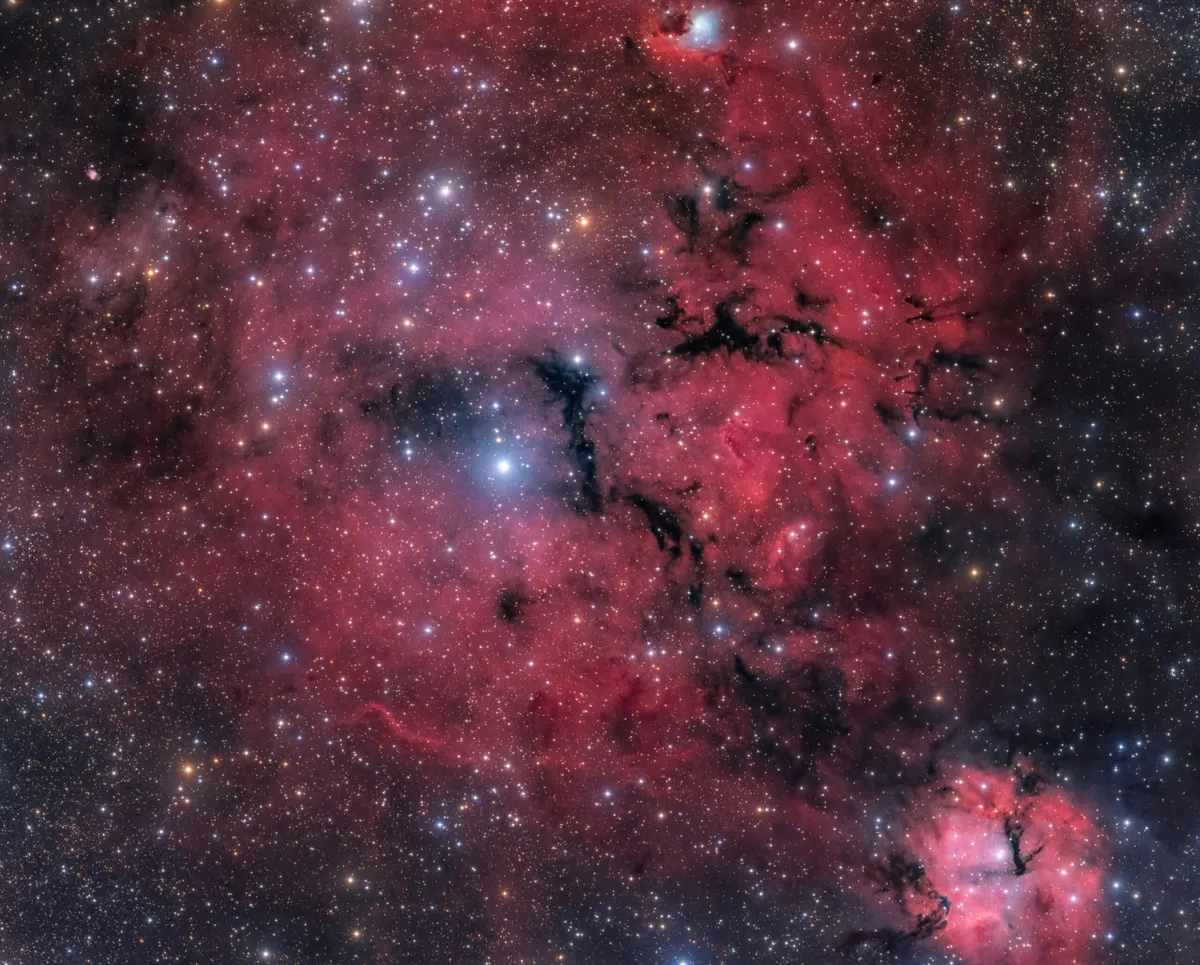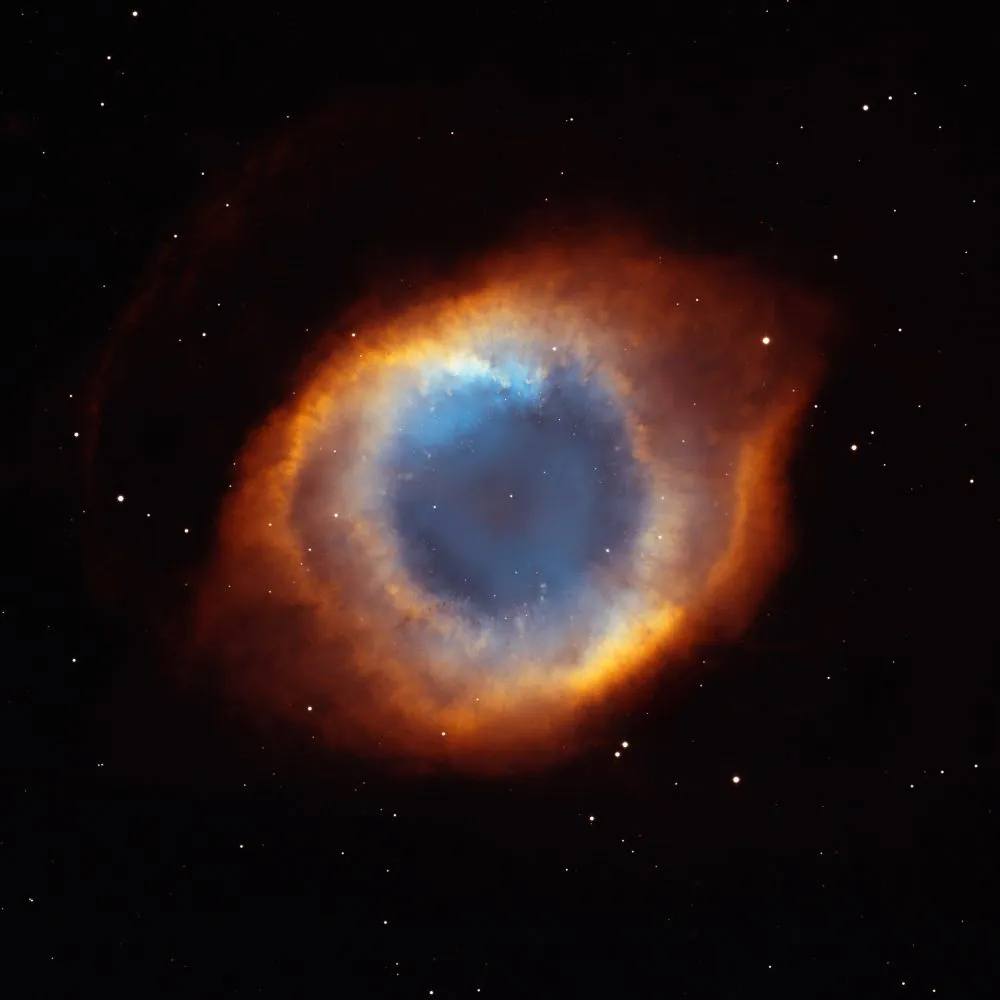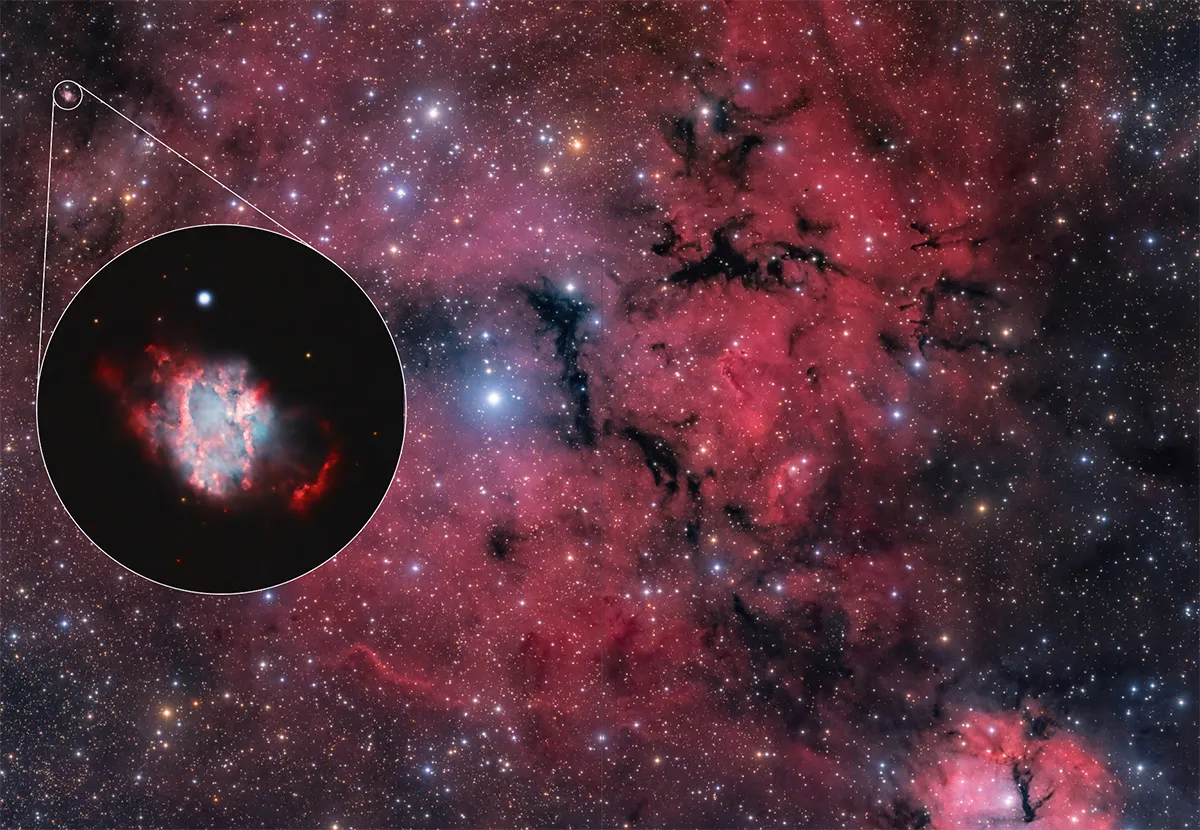A group of amateur astrophotographers managed to track down and photograph a little-known dying star named the Spin Nebula.
Teamwork makes the dream work, says the old cliché… and it’s a maxim that proved true for ShaRA.
This group of astronophotographers, through their collaborative efforts, produced the first high-resolution image of a distant planetary nebula.
The group of 22 mostly Italian astronomers started the ShaRA (Shared Remote Astrophotograph) project as a way of pooling both their financial resources to buy imaging time on large telescopes, and their technical skills to obtain the best results from the collected data.

They decided to look at the Gum 14/15 nebula complex, a pair of neighbouring emission nebulae in the constellation of Vela.
Few amateur images of this region exist, but using Atacama-based Chilescope’s T5 telescope, the group managed to capture the stunningly detailed widefield image seen here.
Things started to get really interesting, though, when group members noticed a small object in the top-left of the image.
It had the typical appearance of a planetary nebula.
What is a planetary nebula?

Planetary nebulae are fascinating objects, and they don't actually have anything to do with planets.
A planetary nebula is formed during the later stages of a star’s life, as instability at its core causes the outer layers of the star to be shed into space.
Stellar wind pushes this material away from the star, which interacts with surrounding material to create beautiful structures, puffed-out like a planetary body (hence the name).
Exploring further...
Some digging through astronomical databases and catalogues revealed that the object found by ShaRA had to be He 2-11, which was first described by US astronomer and astronaut Karl Henize in 1967.
Henize’s suggestion that this was a planetary nebula was confirmed by further research in 1999.
In 2014 closer analysis based on data from the Chandra Observatory revealed it to be one of just three such nebulae known to have a variable binary star as its central star(s).
All interesting stuff, but in terms of images, all that existed of He 2-11 was still just a handful of blurry black and white pictures.

Zooming in on the Spin Nebula
Accordingly, the ShaRA team booked some more time from Chilescope, this time using its T1 telescope.
And so, many hours of observing and processing time later, were eventually able to produce the detailed, first-of-its-kind colour image seen in the inset above.
The ShaRA team nicknamed He 2-11 ‘the Spin Nebula’ – a nod to its fast-rotating central binary – and say their hope is that their image will encourage other amateur astronomers to keep on pushing themselves ever further.
This article originally appeared in the September 2023 issue of BBC Sky at Night Magazine.
